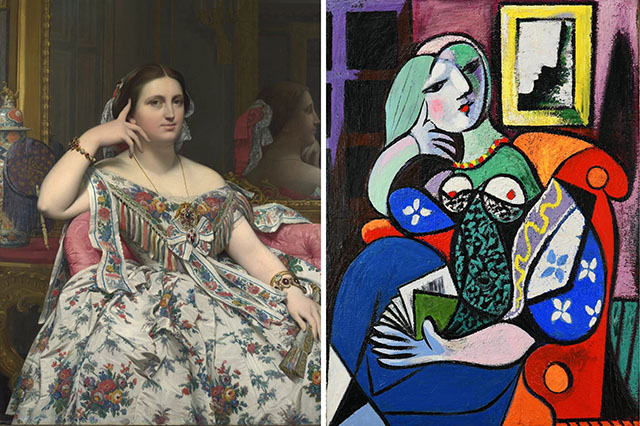Dakar – An unprecedented Picasso exhibition opened this week in Senegal’s capital Dakar, where about a dozen of the Spanish master’s works are displayed alongside African art, from which he drew inspiration.
A pioneering modern artist who died in France in 1973, Picasso left behind a vast and influential body of work including paintings, sculptures and ceramics.
He was one of the founders of the Cubist movement, and was heavily inspired by African art, with the influence notable in seminal paintings such as “Les Demoiselles d’Avignon”.
#ArtHistory | Poster from the First Exhibition of Picasso in Dakar, at the former Musee Dynamique, Éditions Mourlot.
PABLO PICASSO
Pierrot et Arlequin – Musée Dynamique de Dakar, 1972
Offest / Lithographic Poster
76 x 56.6 cm#picassoindakar#cmkartguide #Senegal pic.twitter.com/XVvyOI47Ho— ComMuniK (@ComMuniK_) March 24, 2022
ALSO READ | Senegal’s water-stressed capital faces difficult future
However, Picasso’s interest in Africa remains relatively unknown in Senegal.
El Hadji Malick Ndiaye, an art historian and one of the curators of the Dakar exhibition, said that every African should be proud of how the continent’s art had inspired Picasso.
Visitors should leave with “a sense of pride in what the continent’s artists have given, and in the diversity of styles that have generated new forms and nourished modern art,” he said.
The exhibition sees about 15 of Picasso’s works hosted in Dakar’s Museum of Black Civilisations, on loan from Paris. Alongside them are displayed works of African art, such as otherworldly traditional masks, which so fascinated the influential artist.
Whistling mask
According to the exhibition curators, Picasso’s interest in African art began with a 1907 visit to the Trocadero Ethnological Museum in Paris, which has since closed.
The same year, he painted “Les Demoiselles d’Avignon” which features five female nudes, two of whom are depicted with faces that bear striking similarities to traditional African masks.
A study of the painting is on display in Dakar, paired with an African mask appearing to depict a whistling face.
Cecile Debray, the president of the Picasso Museum in Paris, described Picasso as having a “very relaxed relationship to his sources,” mixing Romanesque, Iberian and African influences
ALSO READ | Gambians flee border zone amid Senegalese anti-rebel operation
The Spanish artist, drawn by the novelty of non-Western artistic traditions, is known to have collected masks and statues from both Africa and Oceania for his studio.
Recent historiography has also highlighted his interest in the spiritual or magical dimensions of such art.
Despite Picasso’s interest in Africa, he seldom travelled and never set foot on the continent, according to Debray.
She added that his interest was not solely artistic, however, and that Picasso was a committed opponent of colonialism.
The artist was a friend of Senegal’s first president Leopold Sedar Senghor, who staged a Picasso exhibition in Dakar in 1972.
Relative unknown
An artistic giant in the West, Picasso is a relative unknown in Senegal, a former French colony of 17 million people.
The exhibition organisers are trying to drum up interest by reaching out to schools in Senegal, where about half of the population is younger than 20.
Daouda Sarr, 24, a project management student, told AFP he had heard of Picasso, but thought of him as a French or European artist.
ALSO READ | Catholic group urges Senegal to end anti-rebel operation
“I was surprised to see that Picasso had done all this around African culture without ever having set foot in Africa,” he said during the exhibition’s opening on Friday.
Sarr said he preferred the whistling mask to the “Les Demoiselles d’Avignon” painting, “because it is an African mask”.
Awa Dia, a 27-year-old who was also at the opening, said that links between Picasso and Africa came as a surprise to her too.
“These are our artists here, they are our ancestors,” she said.
Follow African Insider on Facebook, Twitter, Instagram
Source: AFP
Picture: Twitter / @EdwardHMO


